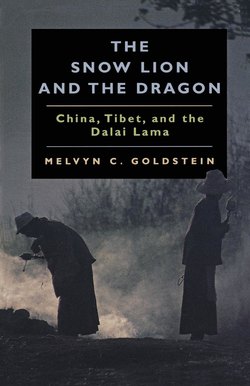Читать книгу The Snow Lion and the Dragon - Melvyn C. Goldstein - Страница 9
На сайте Литреса книга снята с продажи.
ОглавлениеInterlude: De Facto Independence
THE SIMLA CONVENTION
While the Chinese army of 1910 occupied Tibet, the thirteenth Dalai Lama lived in Darjeeling, India, contemplating the circumstances that had allowed Lhasa to be twice conquered within six years. During this time he developed a close friendship with Sir Charles Bell, the government of India's political officer in Sikkim, and learned a great deal about modern politics, seeing firsthand how an efficient and dedicated bureaucracy and army could rule a vast country. The beginnings of a new vision of Tibet formed.
The fall of the Qing dynasty was a stroke of good fortune that the thirteenth Dalai Lama immediately capitalized on. From exile in India he organized a military force to regain his power, and with the help of Nepalese mediation in Lhasa, soon succeeded in expelling all Chinese officials and troops from Tibet. The thirteenth Dalai Lama triumphantly returned to Lhasa in 1913. Yuan Shikai, the provisional president of the new Chinese government that succeeded the Qing, sent the Dalai Lama the following "reinstatement" telegram:
Now that the Republic has been firmly established and the Five Races [Han, Tibetan, Manchu, Mongol, Muslim] deeply united into one family, the Dalai Lama is naturally moved with a feeling of deep attachment to the mother country. Under the circumstances, his former errors should be overlooked, and his Title of Loyal and Submissive Vice-Regent, Great, Good, and Self-Existent Buddha is hereby restored to him, in the hope that he may prove a support to the Yellow Church and a help to the Republic.1
The Dalai Lama replied that he had not asked for his former rank from the Chinese government and that he "intended to exercise both temporal and ecclesiastic rule in Tibet."2 Many interpret this and a proclamation he issued twenty-two days after he returned as the equivalent of a declaration of independence.
The Tibet Question, however, was far from settled since the new Chinese republican government took the position that the non-Chinese territories the Manchu emperors had subjugated—including Tibet—were part of their republic. Sun Yatsen, the "father of the revolution," for example, was extremely nationalistic and had called for the creation of a strong Chinese state that would expel the Japanese from Manchuria, the Russians from Mongolia, and the British from Tibet.3 One of the fundamental nationalistic goals of the Chinese revolution, therefore, was to restore China to its former greatness, and regaining control of Tibet took on great symbolic significance. Thus, on April 12, 1912, the new Chinese republic headed by Yuan Shikai issued an edict that declared Tibet, Mongolia, and Xinjiang on equal footing with the provinces of China proper and as integral parts of the republic. Seats were set aside for Tibetans in the National Assembly and a five-colored flag was created, the black band representing Tibet.4 The Tibet Question in its modern incarnation had been born.
Given the conflicting national aspirations, Tibet clearly had to reach some accommodation with China regarding its political status or be prepared to defend its territory and newly declared "independence." As we shall see, it turned out to be unable to do the former and unwilling to take the steps needed to do the latter. With no effective army at its disposal, Tibet sought to reach an agreement with China's new rulers and received support in this from a new friend—British India. The government of British India had found China a bad neighbor during the 1905-1911 period of direct Chinese power in Tibet. Chinese officials manning the long Indo-Tibetan border seemed to the English to be using their power to foment trouble among the Indian border tribes. Britain therefore sought to prevent the recurrence of direct Chinese control by creating a buffer state in Tibet. In 1913, with the intent of achieving that end, Britain pressured the new Chinese republican government to participate in a conference with itself and Tibet in Simla, India. The Simla negotiations produced a draft convention in 1914 that set the background for the Tibet Question during the next four decades.
Tibet initially wanted the conference to declare it independent. Shatra, the Tibetan plenipotentiary, expressed this in his opening statement when he said: "Tibet and China have never been under each other and will never associate with each other in future. It is decided that Tibet is an independent State and that the precious Protector, the Dalai Lama, is the ruler of Tibet in all temporal as well as in spiritual affairs."5 China, on the other hand, forcefully claimed the opposite in its initial Simla statement: "Tibet forms an integral part of the territory of the Republic of China, that no attempts shall be made by Tibet or by Great Britain to interrupt the continuity of this territorial integrity, and that China's rights of every description which have existed in consequence of this territorial integrity shall be respected by Tibet and recognized by Great Britain."6
